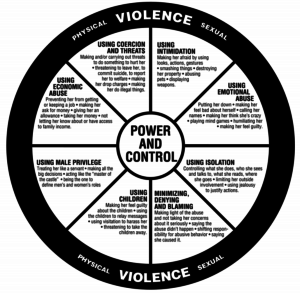What to Do with a Broken Relationship
Relationships are beautiful, but slightly fragile things. We thrive when we’re in meaningful relationships with others, and that is how it should be. Our relationships are a major part of what allows us to flourish, and likewise, when our relationships are out of joint, we find that our life loses color. That’s when we need to learn what to do with a broken relationship.
What to Do with a Broken Relationship
It can take years to build a relationship with someone – a long-cherished friendship, an open and mutually supportive parent-child connection, or a solid and fulfilling marriage. However, the unfortunate reality is that what takes years to build can be undermined in a matter of mere moments. If you’re facing challenges, Huntington Beach Christian Counseling can help you rebuild and strengthen those relationships.
Whether through a betrayal of trust, unkind words spoken in anger, or the failure to meet expectations, a relationship can end up facing serious challenges. Though sometimes the damage done is hard to repair, relationship challenges can often be overcome in healthy ways.
The older you get, the more you come to understand how precious relationships are, and their fragility as well. Broken relationships are a sad fact of life, but thankfully we aren’t left without options for what to do if things go south. Whether you are the one that has made a mistake that leaves a relationship in shambles, or you’re the one that is on the receiving end, here are a few things to consider about a broken relationship.
Recognize how brokenness is a part of life.
The world is a messy place. It’s not okay that it’s a messy place, but it’s just the reality. Part of the messiness of the world and ourselves is that our relationships are less than perfect, just as we are less than perfect. Disappointment and heartbreak are just some of the seasons we can expect in life (Ecclesiastes 3).
Sara Teasdale wrote, “It is strange how often a heart must be broken before the years can make it wise.” The messiness and brokenness of our world hurt, and our hearts will be broken many times in our lifetime, but there is one small comfort in the face of all this – we can learn and grow even amid these painful experiences, and our hearts can become more resilient and wiser.
 This means that broken relationships aren’t the end of us – they don’t close our doors to other opportunities, and they certainly aren’t a unique occurrence. While it can be devastating and hugely challenging to suffer from a broken relationship, we don’t have to be overwhelmed and entirely undone.
This means that broken relationships aren’t the end of us – they don’t close our doors to other opportunities, and they certainly aren’t a unique occurrence. While it can be devastating and hugely challenging to suffer from a broken relationship, we don’t have to be overwhelmed and entirely undone.
Try to find out what happened.
When a relationship breaks down, it may come as a complete surprise to you. Or, in some cases, perhaps you know or can make a good guess at what happened and how things fell apart in your relationship. Perhaps you can pinpoint the precise moment when things crumbled and the relationship was changed forever. While it may seem like dragging yourself through unnecessary pain – doing a post-mortem of your relationship can help you in several ways.
Taking time to discern what happened can help you in making a meaningful apology and in changing certain things if that’s what’s needed. For instance, If you betrayed your friend’s trust by telling someone else a secret, you can take several steps.
You may need to work through what you did, why you did it, and exercise empathy for the other person. These steps will help you understand on a deeper level what went wrong and how you find yourself in your present predicament. When you make your apology, all these things are elements to consider.
Knowing what may have gone wrong will alert you to things you should avoid in other relationships. We want to grow as people, and one way to do that is to learn through our own mistakes. Whether you’re the one responsible for the broken relationship or not, we can learn important lessons about ourselves and other people in the wake of a disruptive event in the relationship.
You may need to adjust expectations, communicate needs more clearly, or establish clearer boundaries with others. These are valuable ideas to ponder because they help us understand ourselves and our relationships better. Understanding why this particular relationship broke down can help you get back on track more securely, or it can help you better cultivate your other relationships.
 While it’s important to understand what happened and how things fell apart, we must also recognize that understanding what happened does have its limits. In Mend my Broken Heart, Jocelyn Soriano wrote “Yes, I understand why things had to happen this way. I understand his reason for causing me pain. But mere understanding does not chase away the hurt. It does not call upon the sun when dark clouds have loomed over me. Let the rain come then if it must come! And let it wash away the dust that hurt my eyes!”
While it’s important to understand what happened and how things fell apart, we must also recognize that understanding what happened does have its limits. In Mend my Broken Heart, Jocelyn Soriano wrote “Yes, I understand why things had to happen this way. I understand his reason for causing me pain. But mere understanding does not chase away the hurt. It does not call upon the sun when dark clouds have loomed over me. Let the rain come then if it must come! And let it wash away the dust that hurt my eyes!”
If you’re the one who has been betrayed and hurt, understanding what happened and why may be cold comfort. Sometimes, understanding helps us come to grips with our new reality, but it can only go so far.
Ask for forgiveness.
We all make mistakes. But we don’t all make the same mistakes in the same way, nor are we consistent in dealing with others the way we would want to be treated. This makes for messy relationships, self-righteousness attitudes, and often an unwillingness to change.
Asking for forgiveness is one important way to try and restore a broken relationship. When you acknowledge what you’ve done wrong, recognize how you’ve hurt the other person, and can clearly see ways of doing better in the future, that can create room to repair a broken relationship. An apology might not fix everything, but it’s a great starting point.
If trust was broken, it may be a long road to get back there again, if you can manage it. One of the ways an apology is powerful is that it lets the other person know that you’re on the same page about your behavior. They now know that you know that what you did was wrong, and for them that can be an important step in finding healing.
If you’re the one whose trust was violated, you can consider what your options are, including extending forgiveness to the person that hurt you. The Bible says, “Be kind and compassionate to one another, forgiving each other, just as in Christ God forgave you” (Ephesians 4:32). This verse is a powerful reminder of our own brokenness and need for forgiveness. It allows us to empathize with those who have sinned against us.
 Forgiving the other person might not mean that things completely reset, but it does mean that you’re choosing to let go of any resentment or bitter feelings toward that person. It’s a way to begin the work of rebuilding the relationship, should you so choose.
Forgiving the other person might not mean that things completely reset, but it does mean that you’re choosing to let go of any resentment or bitter feelings toward that person. It’s a way to begin the work of rebuilding the relationship, should you so choose.
Additionally, if you’re the one who was hurt, you might need to redraw or restate your boundaries with other people. Every healthy relationship requires healthy boundaries, and when one or more of those are violated, that situation can provide you with an opportunity to either restate or redraw those boundaries as needed.
Pick up the pieces.
You need to decide for yourself how the relationship is important to you and what you’re willing to do for it. True friendships, familial relationships, and other meaningful connections with others aren’t easy to find or replace, especially if they’ve been the work of years to cultivate.
This doesn’t mean that you can’t or shouldn’t move on from these relationships if they are harmful, but it does mean we need to weigh carefully what we do with them. In some cases, walking away may be the best thing you can do, while in others working on things is what wisdom dictates.
Take time to heal and process what’s happened. Picking up the pieces of a broken relationship is hard work, whether you’re picking up those pieces to try and put them back together again, or you’re picking them up to set them aside.
Whether you’re the cause of the broken relationship or not, when a significant human connection falls apart, it hurts. If you need help processing a broken relationship, don’t hesitate to reach out to a trustworthy individual such as a friend, family member, spiritual advisor, or trained Christian therapist. Christian Counselors at Huntington Beach Christian Counseling are here to guide you through healing and restoration.
“Just Married”, Courtesy of Nikita Shirokov, Unsplash.com, CC0 License; “Daisy from Below”, Courtesy of Aaron Burden, Unsplash.com, CC0 License; “Hope”, Courtesy of Ronak Valobobhai, Unsplash.com, CC0 License; “Reading the Bible”, Courtesy of Jessica Delp, Unsplash.com, CC0 License


 Again, couples go through all sorts of things, and many healthy relationships will face challenges, sometimes with mixed results. However, the mark of healthy relationships is that they don’t remain in a state of conflict, nor do they endlessly repeat the same mistakes without learning or growing from them.
Again, couples go through all sorts of things, and many healthy relationships will face challenges, sometimes with mixed results. However, the mark of healthy relationships is that they don’t remain in a state of conflict, nor do they endlessly repeat the same mistakes without learning or growing from them. Negative spontaneous emotional reactions. Your partner’s gut-level impressions of you, such as whether they like you or find you interesting, or whether they think you are competent, or how you might compare to other people – all these can point to the health of your relationship. A relationship dominated by spontaneous negative emotional reactions is a cause for concern.
Negative spontaneous emotional reactions. Your partner’s gut-level impressions of you, such as whether they like you or find you interesting, or whether they think you are competent, or how you might compare to other people – all these can point to the health of your relationship. A relationship dominated by spontaneous negative emotional reactions is a cause for concern. Boundaries are important for the health of any relationship. Boundaries signal that each person has their own personality and needs, and respecting those boundaries shows consideration and promotes individual integrity. Boundaries can center around finances, privacy, use of time, friendships, sex, and much else.
Boundaries are important for the health of any relationship. Boundaries signal that each person has their own personality and needs, and respecting those boundaries shows consideration and promotes individual integrity. Boundaries can center around finances, privacy, use of time, friendships, sex, and much else. Rather, the freedom in mind here relates to things like feeling the freedom to be yourself, to make mistakes, to be with people such as your friends and family. It’s a problem when you’re constantly criticized for being who you are, if any mistakes you make are closely scrutinized while those of others aren’t, or if you get isolated from people such as your family and friends.
Rather, the freedom in mind here relates to things like feeling the freedom to be yourself, to make mistakes, to be with people such as your friends and family. It’s a problem when you’re constantly criticized for being who you are, if any mistakes you make are closely scrutinized while those of others aren’t, or if you get isolated from people such as your family and friends.
 Your digestion begins before actually eating food as it relates to external factors like stress and anxiety that unknowingly greatly affect how your foods are digested. Additionally, if your diet consists of food high in sugar or processed, your gut lining and proper functions of your digestion will be impaired due to the constant state of inflammation.
Your digestion begins before actually eating food as it relates to external factors like stress and anxiety that unknowingly greatly affect how your foods are digested. Additionally, if your diet consists of food high in sugar or processed, your gut lining and proper functions of your digestion will be impaired due to the constant state of inflammation. So because this is all the craze, many people rush into then buying those suggested ingredients, supplements, or diet plans without truly preparing for the course that aligns with long-term sustainability.
So because this is all the craze, many people rush into then buying those suggested ingredients, supplements, or diet plans without truly preparing for the course that aligns with long-term sustainability. When it comes to exercise, try an activity that is something new and different. Notice the change in words from exercise to activity. Placing your focus on a daily activity also changes your perspective from it feeling like a chore. Make small commitments then increase your frequency over time. When trying a new activity and you realize you don’t like that one you picked, try something new. Exercise does not have to be hours on a treadmill or doing squats.
When it comes to exercise, try an activity that is something new and different. Notice the change in words from exercise to activity. Placing your focus on a daily activity also changes your perspective from it feeling like a chore. Make small commitments then increase your frequency over time. When trying a new activity and you realize you don’t like that one you picked, try something new. Exercise does not have to be hours on a treadmill or doing squats. When the day is done and the night closes in, as everyone else sleeps, Addie feels drawn to the kitchen area. The day’s stresses fade away as she begins to relax over the food she finds there. From cookies, chips, and cake to a gallon of chocolate ice cream, she eats all she can manage to get her hands upon. Then she makes her way to her bedroom where more snacks she’s stashed await her.
When the day is done and the night closes in, as everyone else sleeps, Addie feels drawn to the kitchen area. The day’s stresses fade away as she begins to relax over the food she finds there. From cookies, chips, and cake to a gallon of chocolate ice cream, she eats all she can manage to get her hands upon. Then she makes her way to her bedroom where more snacks she’s stashed await her. She is doing all she knows how to do to cope with the way she feels. Therapy has crossed her mind but she thinks she should be able to handle her emotions and feelings on her own. Besides, unleashing all the pain is a scary thought. She doesn’t need the added stress.
She is doing all she knows how to do to cope with the way she feels. Therapy has crossed her mind but she thinks she should be able to handle her emotions and feelings on her own. Besides, unleashing all the pain is a scary thought. She doesn’t need the added stress. Those who have been diagnosed with BED quite often meet additional criteria pertaining to other diagnoses as well. It’s not unusual for them to also display signs and symptoms of anxiety disorders, depressive disorders, and even bipolar disorders. Another typical problem is substance and alcohol abuse. For this reason, a professional who is trained to recognize BED will also generally check for additional diagnoses as well.
Those who have been diagnosed with BED quite often meet additional criteria pertaining to other diagnoses as well. It’s not unusual for them to also display signs and symptoms of anxiety disorders, depressive disorders, and even bipolar disorders. Another typical problem is substance and alcohol abuse. For this reason, a professional who is trained to recognize BED will also generally check for additional diagnoses as well. Eating past the point of feeling full
Eating past the point of feeling full In this age of social media, more and more people, including popular entertainers, are posting their struggles with anxiety.
In this age of social media, more and more people, including popular entertainers, are posting their struggles with anxiety. In CBT, the professional counselor helps the sufferer reframe how they think and how they understand their behavior. In this way, negative thought patterns may hopefully be reduced to something more rational and realistic, preventing these unnecessary mental worries and physical responses to worry.
In CBT, the professional counselor helps the sufferer reframe how they think and how they understand their behavior. In this way, negative thought patterns may hopefully be reduced to something more rational and realistic, preventing these unnecessary mental worries and physical responses to worry. Spiritual self-care, which many today seem to ignore, is very essential as a weak spiritual connection to God makes one very susceptible to all kinds of problems, especially worries about the future. Regular prayer time, reading of Scripture, meaningful Church attendance, and fellowship with other caring believers will do wonders for the spiritual health so that negative, anxious thoughts will not easily bring one down.
Spiritual self-care, which many today seem to ignore, is very essential as a weak spiritual connection to God makes one very susceptible to all kinds of problems, especially worries about the future. Regular prayer time, reading of Scripture, meaningful Church attendance, and fellowship with other caring believers will do wonders for the spiritual health so that negative, anxious thoughts will not easily bring one down. Now while yoga is very helpful for those suffering from anxiety, as a Christian, one must remember to only incorporate the principles of relaxation and mindfulness and not any non-Christian spiritual practices or beliefs. Compromising one’s spiritual beliefs should never be an option.
Now while yoga is very helpful for those suffering from anxiety, as a Christian, one must remember to only incorporate the principles of relaxation and mindfulness and not any non-Christian spiritual practices or beliefs. Compromising one’s spiritual beliefs should never be an option.

 Domestic abuse does not always happen how you might think. It can start small and build up from there. Often, abusers choose kind-hearted, empathetic victims whose very strengths are used against them. The victims are then manipulated into a life of submission to a controlling, abusive partner.
Domestic abuse does not always happen how you might think. It can start small and build up from there. Often, abusers choose kind-hearted, empathetic victims whose very strengths are used against them. The victims are then manipulated into a life of submission to a controlling, abusive partner. This keeps the victim confused and off-balance. She might think that the latest abusive incident is the last one. She might think it’s her fault, which he would like to convince her of, especially if she responds emotionally or angrily to his treatment of her.
This keeps the victim confused and off-balance. She might think that the latest abusive incident is the last one. She might think it’s her fault, which he would like to convince her of, especially if she responds emotionally or angrily to his treatment of her. Assessing the safety and risks is the important factor. Once a woman begins to make efforts to change the relationship or to leave the situation, the risk of violence increases exponentially. Making a safety plan is paramount if you believe there is even the slightest risk of violence.
Assessing the safety and risks is the important factor. Once a woman begins to make efforts to change the relationship or to leave the situation, the risk of violence increases exponentially. Making a safety plan is paramount if you believe there is even the slightest risk of violence. Anxiety can prevent us from taking part in social activities. It can cause us to have problems at work or keep us from going to gatherings. When we are missing out, it is high time to take a close look at our anxiety and the social phobia it is causing in order to better understand it and to better enable us to get help.
Anxiety can prevent us from taking part in social activities. It can cause us to have problems at work or keep us from going to gatherings. When we are missing out, it is high time to take a close look at our anxiety and the social phobia it is causing in order to better understand it and to better enable us to get help.  Try to get a grip on it through taking deep, controlled breaths. Breathe in through your nose and then out slowly through your mouth, counting to three. Once you have completed the deep breathing exercise, attempt to figure out what the trigger is.
Try to get a grip on it through taking deep, controlled breaths. Breathe in through your nose and then out slowly through your mouth, counting to three. Once you have completed the deep breathing exercise, attempt to figure out what the trigger is. Controlling our focus is the key to stopping the circus. It takes some practice but it can be done. When you think of positive things about yourself, you will find that your anxiousness subsides. A good bit of the worry we have is based on things that are not true. You may feel God is going to punish you for something or that you are going to get a disease. Think of fears you had in the past that never came to pass. That is very helpful in recognizing the unwarranted fears.
Controlling our focus is the key to stopping the circus. It takes some practice but it can be done. When you think of positive things about yourself, you will find that your anxiousness subsides. A good bit of the worry we have is based on things that are not true. You may feel God is going to punish you for something or that you are going to get a disease. Think of fears you had in the past that never came to pass. That is very helpful in recognizing the unwarranted fears. If all environmental factors have been ruled out, it could very well boil down to a psychodynamic contributor, like having an overly critical father or mother who continually made him feel belittled. While this issue is one that can take some time to really work through, there are short-term solutions that can temporarily help to boost his self-confidence.
If all environmental factors have been ruled out, it could very well boil down to a psychodynamic contributor, like having an overly critical father or mother who continually made him feel belittled. While this issue is one that can take some time to really work through, there are short-term solutions that can temporarily help to boost his self-confidence. We’ve all heard of depression, but how much do we really understand about it? It’s often misunderstood in terms of its clinical diagnosis and greatly overused in pop culture.
We’ve all heard of depression, but how much do we really understand about it? It’s often misunderstood in terms of its clinical diagnosis and greatly overused in pop culture.  If you’re noticing that you’re very short-tempered or yelling at your spouse or kids a lot, or otherwise lashing out. Instead of working through your feelings, and identifying their root cause you may project them onto others, blaming those around you for the feelings you have about yourself.
If you’re noticing that you’re very short-tempered or yelling at your spouse or kids a lot, or otherwise lashing out. Instead of working through your feelings, and identifying their root cause you may project them onto others, blaming those around you for the feelings you have about yourself. Another common symptom associated with clinal depression is being extremely restless at night and constantly tired during the day when awake, with little to no motivation to get out of bed to start daily activities. Going to work, or getting the kids on the bus in the morning becomes overwhelming. Even trips to the grocery store may begin to seem like they are simply too much to handle.
Another common symptom associated with clinal depression is being extremely restless at night and constantly tired during the day when awake, with little to no motivation to get out of bed to start daily activities. Going to work, or getting the kids on the bus in the morning becomes overwhelming. Even trips to the grocery store may begin to seem like they are simply too much to handle. It is common for people who are experiencing depression to experience a decreased or complete loss of interest in life. Things that once provided a sense of accomplishment or fulfillment no longer provide any satisfaction. Spending time with friends or family becomes more of a chore as isolation and solitude increase.
It is common for people who are experiencing depression to experience a decreased or complete loss of interest in life. Things that once provided a sense of accomplishment or fulfillment no longer provide any satisfaction. Spending time with friends or family becomes more of a chore as isolation and solitude increase. And even for adolescents, depression is an issue. “In 2015, an estimated 3 million adolescents age 12 to 17 in the United States had at least one major depressive episode in the previous year, according to the National Institute of Mental Health.” (ADAA.org)
And even for adolescents, depression is an issue. “In 2015, an estimated 3 million adolescents age 12 to 17 in the United States had at least one major depressive episode in the previous year, according to the National Institute of Mental Health.” (ADAA.org) In recent years, yoga has become quite popular in Western culture as a way to keep the body and mind strong.
In recent years, yoga has become quite popular in Western culture as a way to keep the body and mind strong. When depressed, a sufferer may feel that their spirit is at an all-time low, making it easier to succumb to negative thoughts about self-harm (e.g. suicide, alcohol or drug abuse) or breaking relationships (e.g. divorce, running away, isolation). This is why it is very important for the sufferer to reconnect with God.
When depressed, a sufferer may feel that their spirit is at an all-time low, making it easier to succumb to negative thoughts about self-harm (e.g. suicide, alcohol or drug abuse) or breaking relationships (e.g. divorce, running away, isolation). This is why it is very important for the sufferer to reconnect with God.